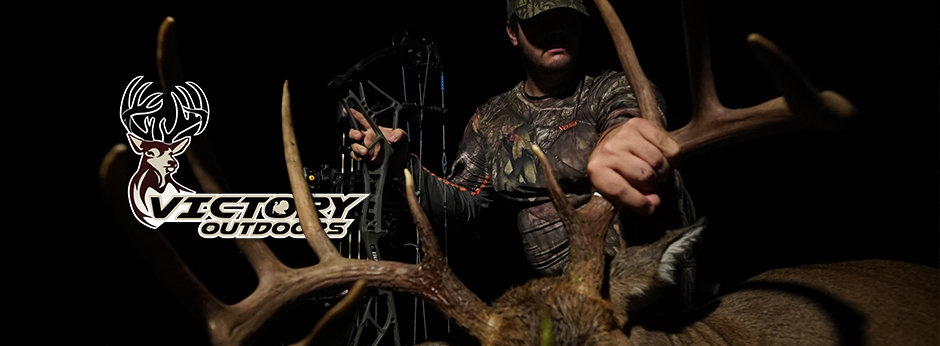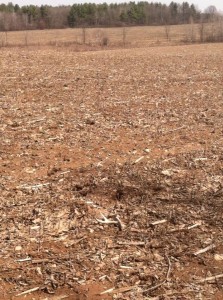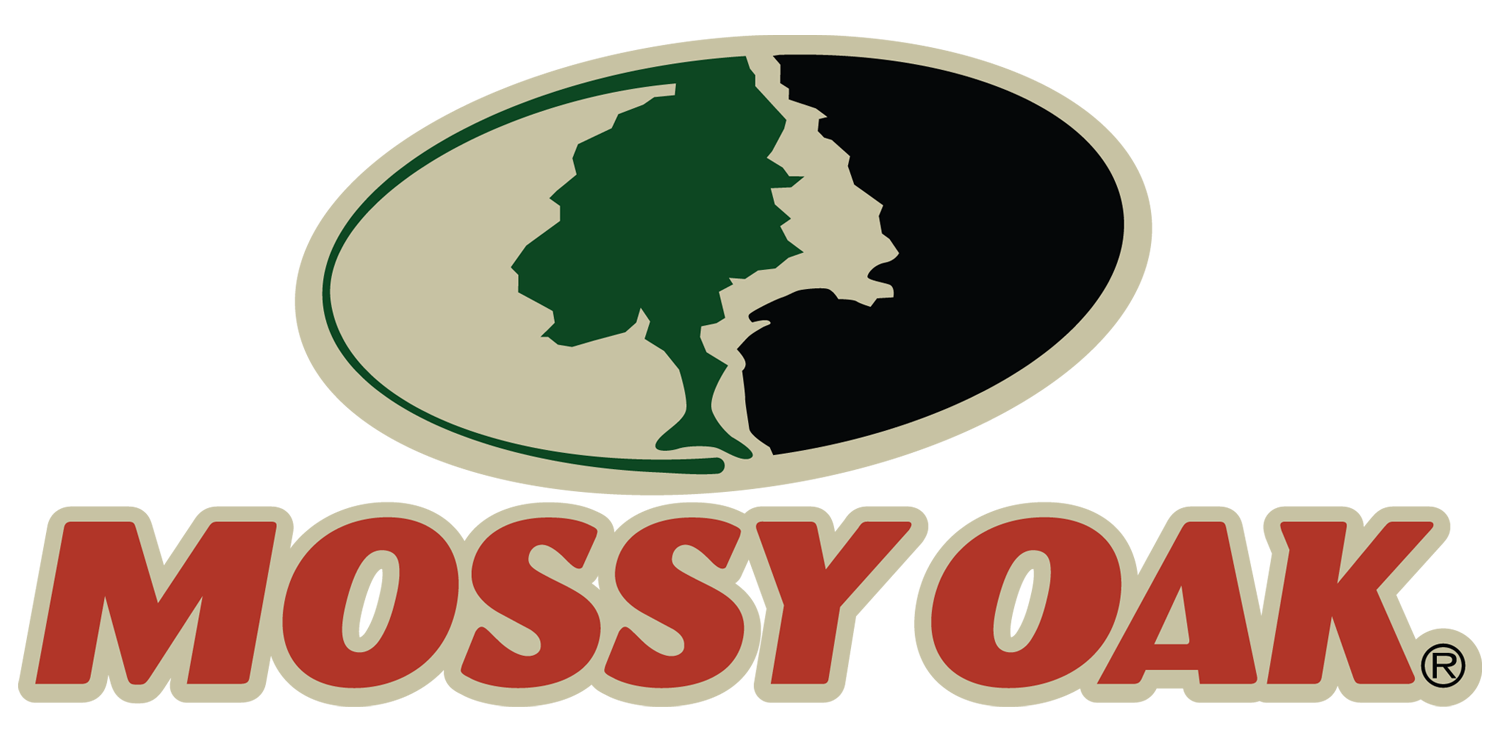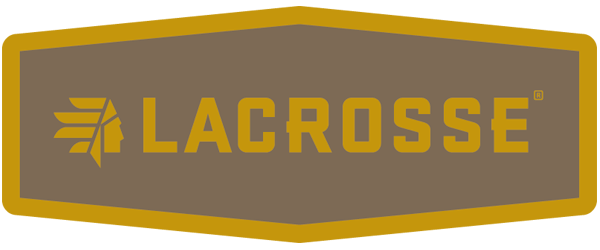Over the years, I have put on many miles shed hunting in the early spring months in Wisconsin. It’s a hobby that I enjoy not only for the prize of finding proof that bucks made it through the winter, but also for the exercise and another excuse to be in the outdoors. Shed hunting is an exciting activity because it can be fun for children, beginners, diehards, and both deer and turkey hunters. People shed hunt for different reasons: money for the antler itself, exercise, opportunity to scout for turkeys or find morel mushrooms, and deer herd management, just to name a few. Most hardcore shed hunters will agree that there is no magic trick to finding sheds; a person has to put in the miles, time, and effort. There are several areas of the woods that can increase your odds of finding sheds because of the frequency that deer visited during the shedding weeks. Here is a list of my favorite spots to comb first when I enter an area:
Crop fields: corn, soybeans, alfalfa, winter wheat, etc. These food sources are an obvious choice because deer spend most of the winter pawing in these fields for food. Deer can even be seen bedded right in open fields that harbor a food source so as not to expel unnecessary energy.
Pine plantations: Thick rows of pine are a common area that deer yard up in during winter to escape the harsh winds, bed below the pine boughs for cover, and nibble on cones and bark. Sheds found in pines are often the first to be chewed on because of the population of red squirrels and other critters that consumed the minerals in antler.
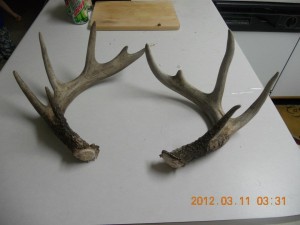 Lone pines: Big white pines or lone spruces on the edge of feeding or bedding areas are attractive to bucks and will often be frequented as a bedding/looking out area night after night during the shedding weeks.
Lone pines: Big white pines or lone spruces on the edge of feeding or bedding areas are attractive to bucks and will often be frequented as a bedding/looking out area night after night during the shedding weeks.
Bedding areas: Not too much explaining needs to go into this one, but it’s obvious that sheds will be found where the bucks spend the majority of their time, so tall grassy areas, swamps, and thick buck brush (tag alders, willow thickets) are your first choice. The thicket brush will aid in “catching” sheds as well when they are ready to drop. If time is limited, deer instinctually bed on the southern slopes to avoid cold winters, so starting on the south side of bedding areas, hillsides, and field edges will increase your odds.
Intersecting trails: Again, probability is the key to this one. During the harsh winter with deep snow, deer will utilize their trails over and over again, so doing some scouting for deer trails and where they intersect during the shedding weeks will be key when the spring comes and the snow melts. Often shed hunters make the mistake of following deer trails in the spring, but don’t realize that winter patterns with snow are much different than springtime.
“Jarring” areas: Places that deer need to jump or duck are good because when sheds are ready to drop, often both sides will come off within minutes together, so sets can be discovered. Jarring areas include creek crossings, fence crossings, logging trails, ditch crossings, and hillsides.
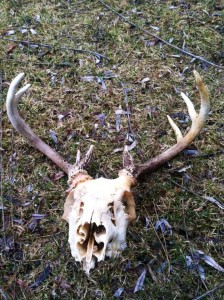 Open water sources: If you know the land well, then you know where the water sources are. In the winter, ponds, rivers, and creeks may be frozen over. Deer often break holes in deeper water sources and continue to use those same drinking spots all winter. Though you may not find sheds that fell on the ice and melted into the water sources, knowing the trails and crossing they used to get to those open water holes could produce finds.
Open water sources: If you know the land well, then you know where the water sources are. In the winter, ponds, rivers, and creeks may be frozen over. Deer often break holes in deeper water sources and continue to use those same drinking spots all winter. Though you may not find sheds that fell on the ice and melted into the water sources, knowing the trails and crossing they used to get to those open water holes could produce finds.
It’s important to keep an eye out for deadheads as well. Bucks that were never recovered from being wounded or simply didn’t make it through the harsh winter can be a bittersweet find, but still exciting. Searching creek bottoms and lowlands with cover, places where hit deer will run on instinct, can offer you deadheads.
Working over these areas may increase your odds, but the only surefire way to find sheds is to put in the miles. Multitasking can make it worth your time, such as finding morel mushrooms or scouting for turkeys for your spring hunt. Every shed found is a thrill, big or small, and if you run trail cameras in the fall, it can be exciting to compare sheds to picture of bucks you’ve had on your land. If you harvest that buck in the fall, it can be fun to know you found its sheds the winter before.
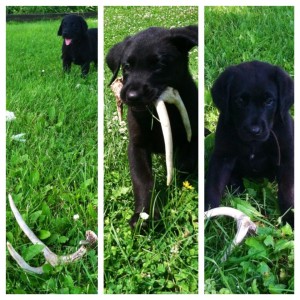 Shed dogs and shed traps can increase your odds of finding sheds tremendously. Training a shed dog could be a whole different article in itself, but can be rewarding for both the owner and dog if you are a serious shed hunter. Shed traps come in many different designs, including “the horseshoe” and “the zig-zag”. It’s important to keep the wire loose on your traps to avoid neck breaks if the antlers aren’t ready to drop. Some people also use bungee cords corralled around a feeding bucket to knock horns off as well. Keeping feed or corn stocked during the shedding weeks will keep the bucks around, and if the antlers don’t fall off right at the feeding site, they won’t bed far from the food source so sheds might be closer than you think!
Shed dogs and shed traps can increase your odds of finding sheds tremendously. Training a shed dog could be a whole different article in itself, but can be rewarding for both the owner and dog if you are a serious shed hunter. Shed traps come in many different designs, including “the horseshoe” and “the zig-zag”. It’s important to keep the wire loose on your traps to avoid neck breaks if the antlers aren’t ready to drop. Some people also use bungee cords corralled around a feeding bucket to knock horns off as well. Keeping feed or corn stocked during the shedding weeks will keep the bucks around, and if the antlers don’t fall off right at the feeding site, they won’t bed far from the food source so sheds might be closer than you think!
